This Mermaid Robot Helps Scientists Hunt for Sunken Treasure
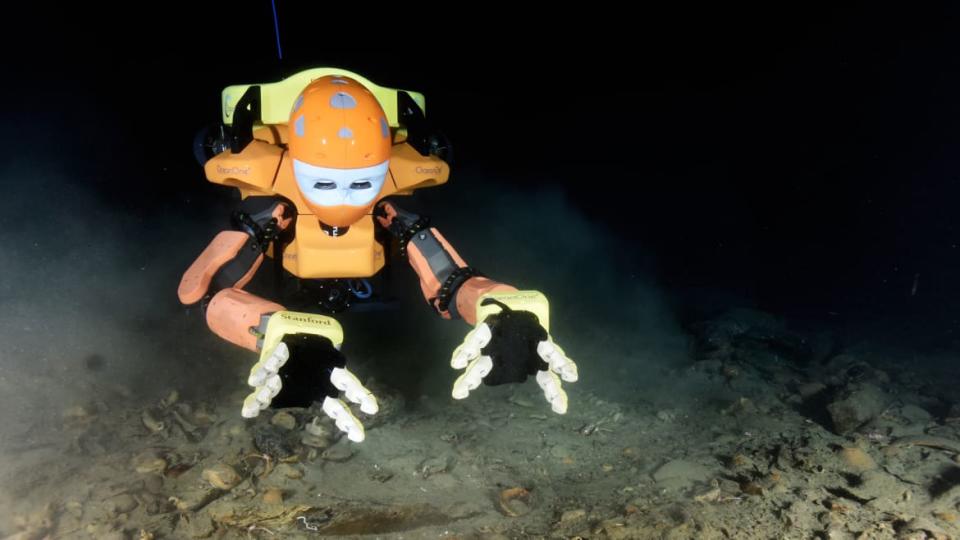
More than 330 meters below the surface of the Mediterranean Sea, OceanOne, a humanoid submersible developed by Stanford University’s Robotics Lab, closed in on its target: the Aléria, a 2nd-Century Roman shipwreck that held ancient treasure. For a moment, the sub hovered just above the seabed in the silent darkness. A smaller helper robot nearby readjusted its spotlight, illuminating the ground. Then OceanOne softly plunged its fingers into the sand at the base of the wreck, and started feeling around.
“I'm seeing through the eyes of the robot, and I'm touching through the hands of the robot,” Oussama Khatib, director of the Robotics Lab at Stanford, told The Daily Beast.
Carefully, the robot’s hands lightly combed the sand. It stopped, readjusted its grip, and unearthed a small object out of a brief puff of silt. Khatib drew it closer into view: a near perfectly preserved oil lamp from the early Roman Empire.
“What is important is that you have a hand and arm that is very compliant, that you can gently close your hand around the object and take it,” Khatib told The Daily Beast. “Then you're not going to break it. There are no other arms like this for archeology. It is really a new technology.”
The core technology Khatib is referring to is haptic feedback. Sometimes called kinesthetic communication or 3D touch, haptic technology creates an experience of touch by applying forces, vibrations, or motions to the user. And it is helping scientists like Khatib explore new frontiers in their research.
The OceanOne expedition, which took place off the coast of Corsica in July 2022, was the longest and deepest underwater mission testing haptics of its kind, reaching a depth of one kilometer down. The project started in September 2021 with two sites near Marseilles. The first was a World War II P-38 Lightning aircraft 40 meters underwater; the second was and a submarine, Le Protée, resting 124 meters down. Since then the OceanOne robot has slowly been plunging to deeper and deeper parts.
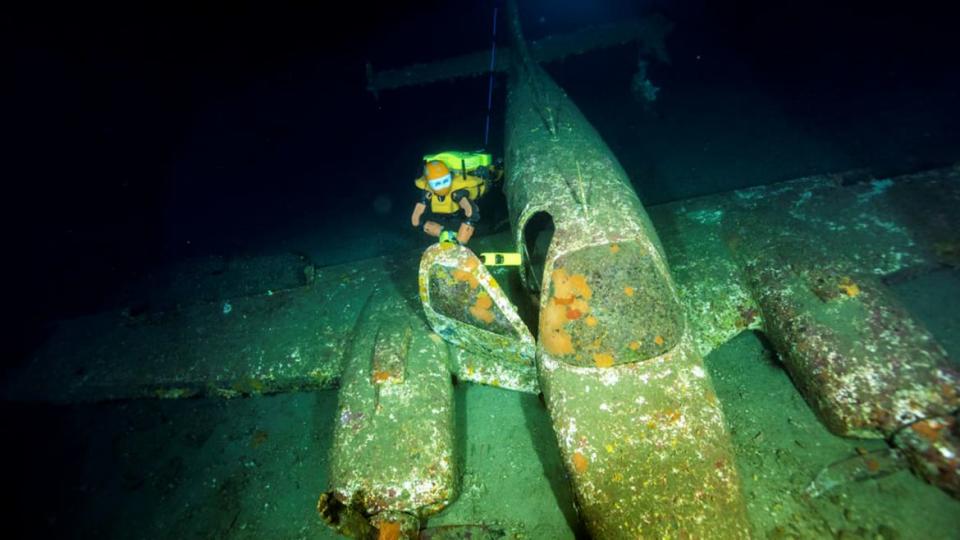
World War II P-38 Lightning aircraft.
The team—composed of an international cadre of roboticists, marine biologists, and underwater archeologists—seeks to use the haptic robot to “explore places no one has gone before and to show that human touch, vision, and interactivity can be brought to these sites far-removed from where people can operate,” according to Stanford News.
All the robots in the mission were controlled from the Alfred Merlin, a research vessel designed by Michel L’Hour while he was director of the French Department of Underwater Archeology (DRASSM).
“For an archaeologist, the two absolutely essential senses are sight and touch,” L’Hour told The Daily Beast. “And it’s still possible to do without sight when working in very dirty water. If we do not perceive this notion of touch, it is impossible to perceive if the object is fragile—if it is cracked, for example.
“Haptic hands are therefore absolutely essential,” said L’Hour. “The archaeologist is a kind of surgeon from the past. Could we imagine a surgeon who would work without feeling what he touched? It's the same for us.”
Inside the Alfred Merlin, Khatib wore special glasses that allowed him to move the robot’s head, and see the underwater environment in 3D through the robot’s two eye cameras. He held the oil lamp and watched another helper robot, piloted by the French Department of Underwater Archeology, slide next to OceanOne. It touched down an open container on the seabed. Khatib swiveled OceanOne’s arms, lowered the artifact using the haptic hands, and gently released the oil lamp into the container. Then the helper robot closed the container lid and slowly started the 90 minute ascent to the surface.
OceanOne’s trip to the Aléria brought back a total of four early Roman Empire oil lamps and a pristine ornate vase. “The oil lamps found on the Aléria wreck bear extremely important inscriptions for dating the cargo and understanding the economic and historical environment of the site,” said L’Hour. “These are essential to understand and date the wreck Aléria and to understand where this wreck is located in the history of economic exchanges by sea in Roman times in the Mediterranean.” L’Hour and Khatib both confirmed that the artifacts could not have been rescued without the help of such precise haptic feedback on the OceanOne.
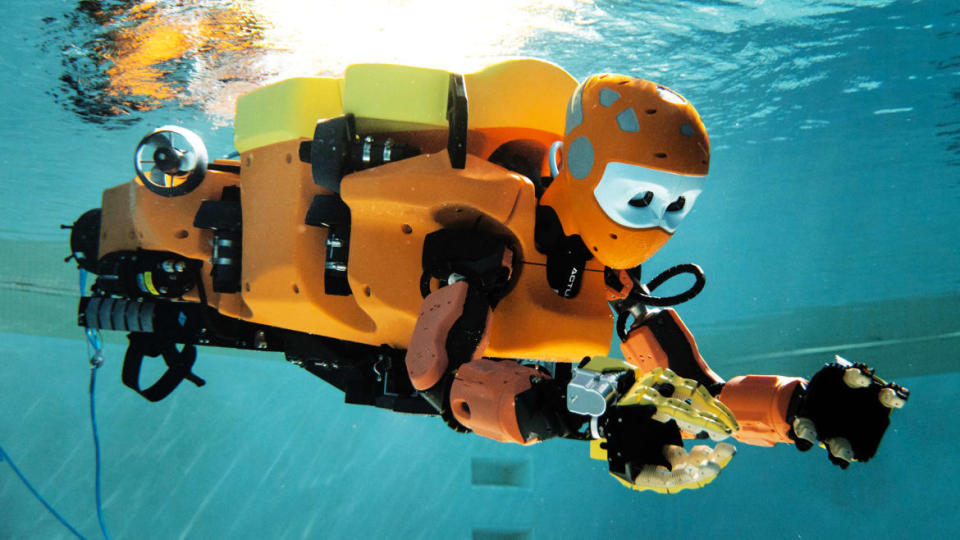
After the Aléria, the team sailed to Le Francesco Crispi, an Italian steamship sunk by a British torpedo in 1943. OceanOne had already visited the Crispi in February but mechanical issues with one of the arms hindered the operation. One challenge the team faced was that the wreck sits about 500 meters below the Mediterranean’s surface—deeper than OceanOne had ever been before.
“We needed to redesign the electronics,” Khatib told The Daily Beast. “Oscillators at 1,000 meters of pressure are going to be destroyed. So we had to go to solid state oscillators and capacitors.”
Khatib and the team at Stanford needed to keep the arms light and dexterous, while also defending sensitive haptic electronics. So to combat the immense pressure at the depth of the Crispi, the team, in collaboration with Meka Robotics, created a system of matching internal and external pressure using oil in the robot’s arms.
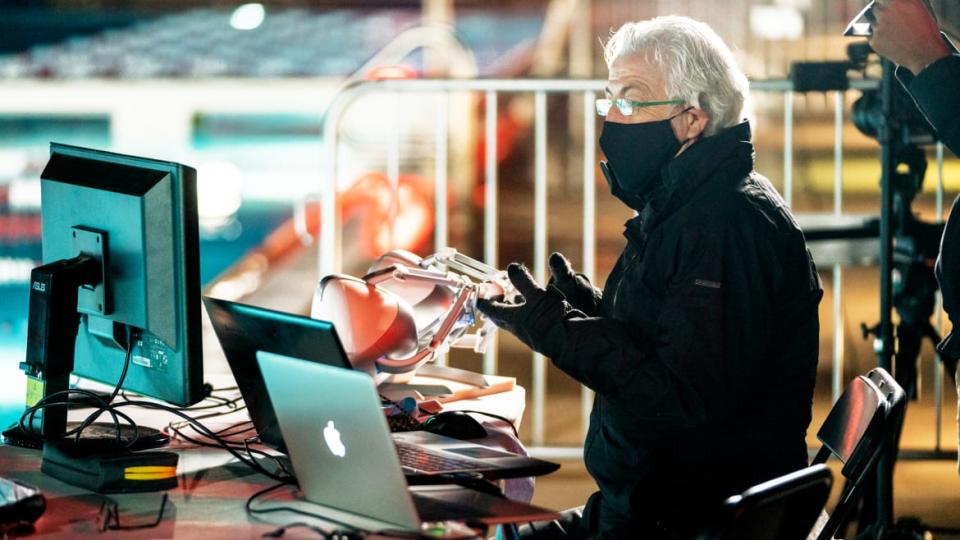
Oussama Khatib.
“There is a compensator that takes the pressure from the water and presses it into tubing, which keeps the oil the same pressure inside as outside.” Khatib told The Daily Beast.
This time OceanOne was able to fully explore the Crispi. Using haptic hands, Khatib held a camera fixed to a long rod. He then angled it into small fissures of the boat to scan the interior for cracks and artifacts. In the process, the team discovered a new type of iron-oxidizing rust that had never been seen before.
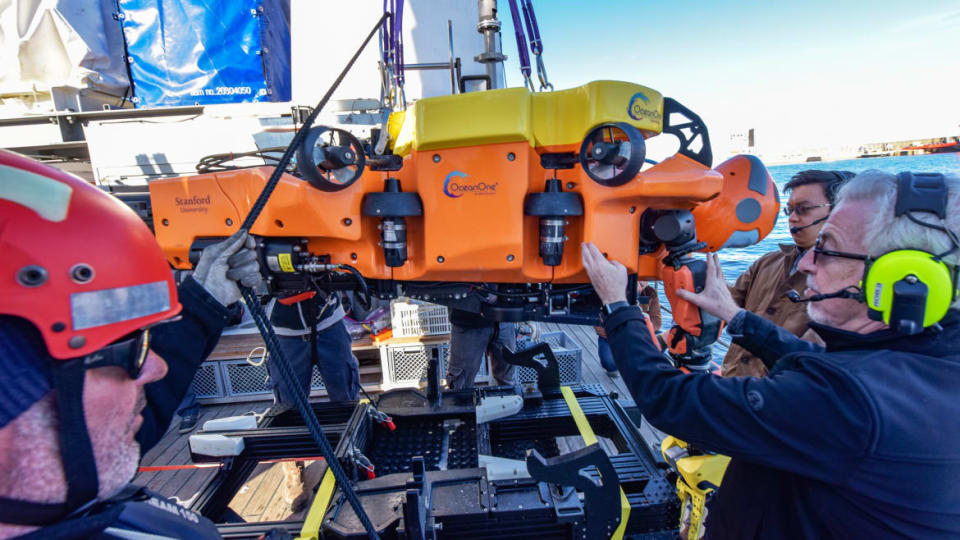
Haptic technology isn’t just helping us better control and explore our environment underwater. It’s also being used on the International Space Station. François Conti is the co-founder of Force Dimension, a Swiss-based haptics systems company. He is also a former student of Khatib’s at Stanford and worked on developing the OceanOne project. Conti believes that in the future, haptic systems will enable us to build structures with robots on the moon.
“The idea is that we can now start working on the moon, we can have astronauts tele-operating those robots, as if they're there,” Conti told The Daily Beast. “So we see all sorts of areas where you realize bringing in haptics is incredible, because you can now start fixing satellites remotely, operating a robot on the moon.”
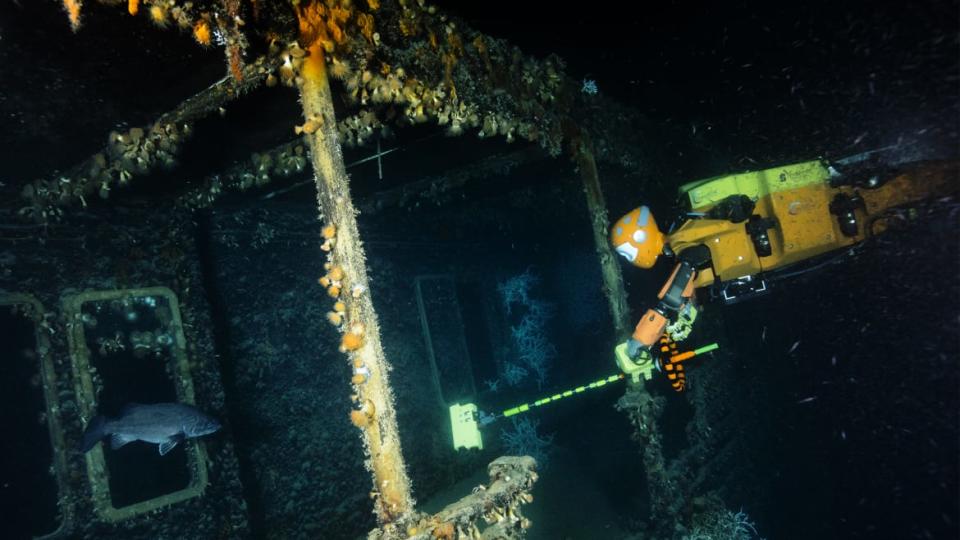
The robot investigating old wreckage at the bottom of the ocean.
In November 2019, Force Dimension, in collaboration with the European Space Agency (ESA), delivered haptic interfaces to the ISS. Dubbed the METERON project (Multi-Purpose End-To-End Robotic Operation Network), it was tested by astronauts on the ISS to control terrestrial robots in the Netherlands using haptic feedback. And ultimately, as Conti told The Daily Beast, “you can shake hands from Earth to space.”
While there is no pressure, water, or gravity to contend with in space, haptic communications have their own set of challenges operating in outer orbit. The two biggest hurdles were speed and distance, Conti said. The ISS spins around the Earth at 17,500 miles per hour, making full circumnavigation of the globe every 90 minutes. It’s also approximately 250 miles from sea level, compared to OceanOne, which submerged one-third of a mile. So to account for the speed and distance, Force Dimension linked to a “constellation of satellites to create an internet connection to Earth,” Conti explained. This way the ISS would always be daisy-chained to a single point on Earth, while rapidly spinning around it.
The slightest lag in haptic feedback could make all the difference when dealing with fragile objects like artifacts and space equipment. But both Conti and Khatib said their systems incorporate algorithms to soften any delays.
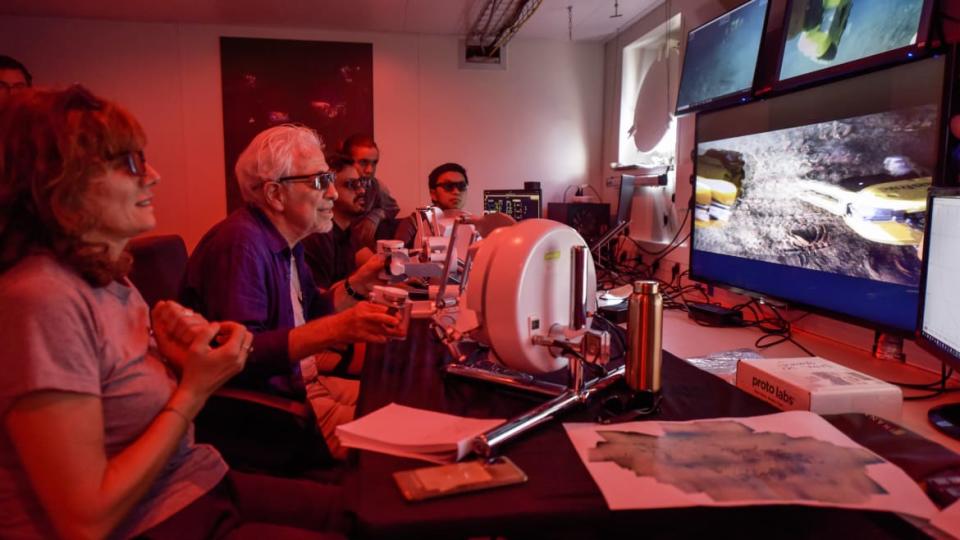
Oussama Khatib and his team navigating the robot and looking at its observations.
Ultimately, whether it’s under 1000 pounds of pressure or floating at zero gravity, haptic feedback is helping us better explore and restore our internal and external worlds. Humanity’s ability to harness haptics is playing a pivotal role in advancing the ways we pilot ourselves in the future. Khatib put it best when he said: “When you touch, it's complete. Touching something half a kilometer down, it becomes real.”
Get the Daily Beast's biggest scoops and scandals delivered right to your inbox. Sign up now.
Stay informed and gain unlimited access to the Daily Beast's unmatched reporting. Subscribe now.

 money
money 